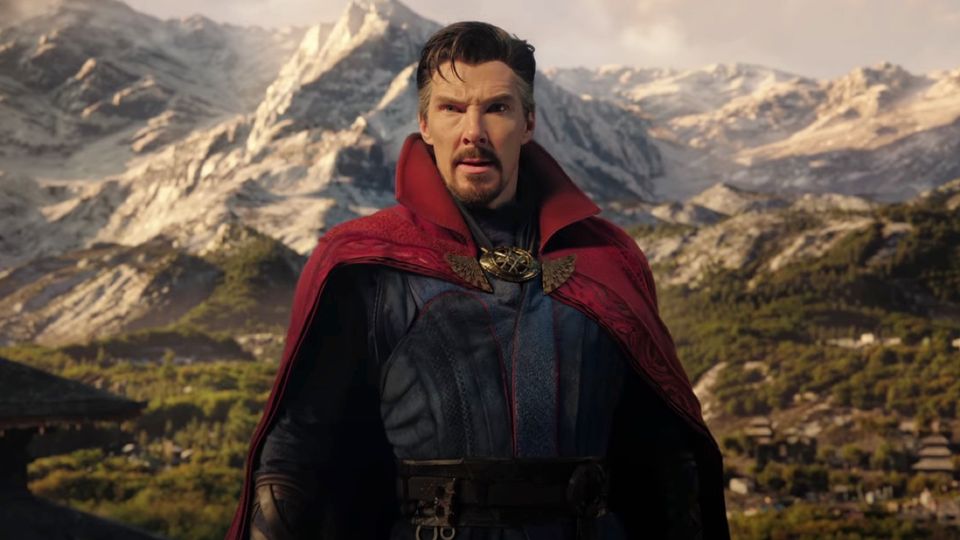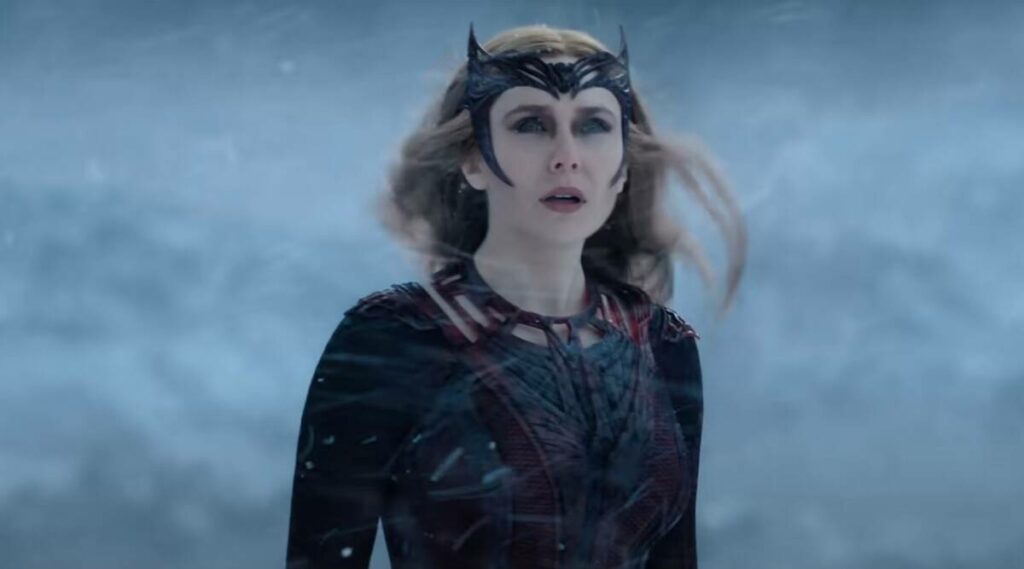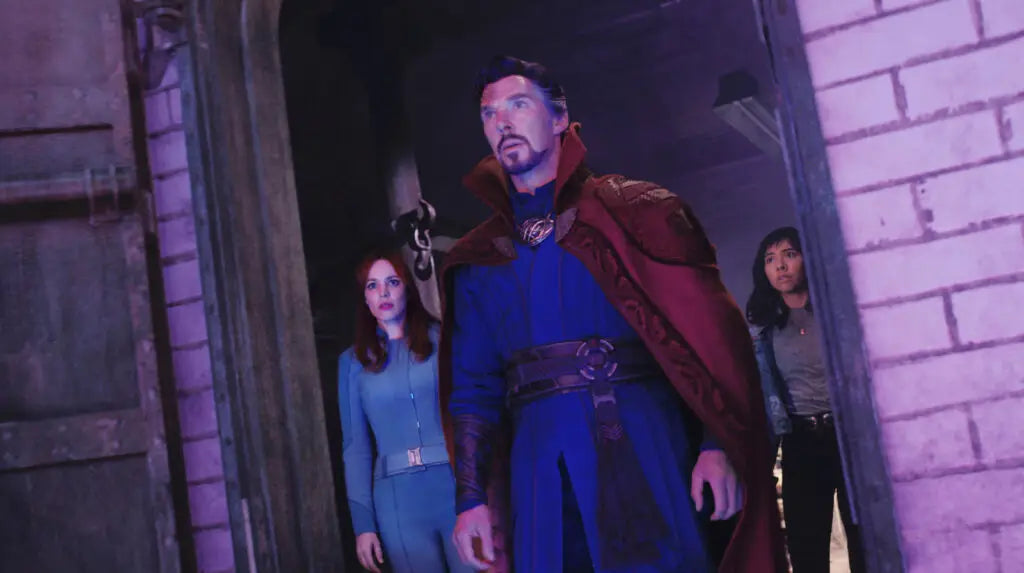When the vast and forever-expanding Marvel Cinematic Universe began, part of the idea was to hire on distinct directors to bring a sense of filmmaking legitimacy to the comic book proceedings. Whether it was the Shakespearian family drama that Kenneth Branagh emphasized in Thor, the classic period adventure feel that Joe Johnston brought to Captain America: The First Avenger, the buddy cop stylings of Shane Black’s Iron Man 3, or the colorful space operatics of James Gunn’s Guardians of the Galaxy, Marvel Studios took pride in their roster of talent behind the camera, and the approach helped set each film apart thematically, tonally and visually.
Nearly a decade and a half since the first Iron Man was released, the MCU has now grown into a genuine media behemoth. As a film franchise, it has rapidly flown past well-established series like Star Wars and Jurassic Park at the box office partially due to the sheer volume of new entries that the studio sends out to theaters every year. Various television shows (both canon and quasi-canon) are now incorporated into the universe as well, with a whopping six seemingly essential Disney+ series coming out just within the past year. That’s in addition to four new feature-length Marvel films since last summer - Doctor Strange in the Multiverse of Madness makes it five.
With so many different-but-still-connected projects being made all at the same time now by the same studio, Marvel (and perhaps to an ever greater degree, their parent company Disney) have been threatening to oversaturate their own superhero market. In a post-Endgame era, the MCU has been nearing a crisis of quantity over quality. While nothing has been an outright disaster (in fact, one could argue that the MCU has yet to come out with a genuinely bad entry) thus far, much of Phase 4 has felt lackluster in too many places. Even before the pandemic threw Marvel’s plans into a partial state of disarray, the studio’s various filmmakers have been steadily losing their personal styles to bland CG action and green screen overload. On top of that, the teases and setups and crossovers that once made the franchise enticing now feel far less organic. Instead, they’re more obligatory and driven by demand from fans rather than the stories themselves.

Courtesy of Marvel Studios
So it stands to reason that Multiverse of Madness could’ve been that first actually bad film for the MCU, buried under the weight of self-indulgent franchise crossover (like Spider-Man: No Way Home almost did to itself) and a somewhat messy and troubled production. Besides Marvel’s original release schedule - which had the Doctor Strange sequel set before No Way Home and Loki, both of which also explore the multiverse - being hastily switched around due to the pandemic, writer and director Scott Derrickson also left the project in the middle of production, citing creative differences. Director Sam Raimi, along with writer Michael Waldron (Loki), were brought in and had to more or less start from scratch while still needing to include studio-mandated characters and moments.
Yet Marvel manages to just stick the landing yet again, with Raimi acting as one half of the film’s saving grace (we’ll get to the other half in a minute). This is Raimi’s first film in over nine years and marks his triumphant return to the superhero genre, having previously revolutionized it with his Spider-Man trilogy in the early 2000s. But Multiverse of Madness also allows the dynamic filmmaker to play with the kind of over-the-top horror elements that he truly became loved for (having helmed the cult favorite Evil Dead franchise) and deliver a chapter of the MCU that stands out from the pack in a fun and stylistic way not seen since Taika Waititi saved the God of Thunder with Thor: Ragnarok.
The film picks up with Stephen Strange (Benedict Cumberbatch) in a bit of an existential rut. Despite having saved the world more than once, the Master of the Mystic Arts isn’t all that content with his life. He’s lonely, longing for what could’ve been with his former love Dr. Christine Palmer (Rachel McAdams) and still grappling with the consequences of he and the Avengers’ battle against Thanos. Fellow hero Wanda Maximoff (Elizabeth Olsen) is full of longing herself, desperate to be reunited with the children she conjured up during the events of WandaVision, and willing to do anything to make it a reality. When a teenager named America Chavez (Xochitl Gomez) arrives in town with the ability to travel through the multiverse, Wanda sees her as the perfect means to an end. But Strange, along with Sorcerer Supreme and close friend Wong (Benedict Wong), won’t let Wanda take the young girl for her power, which leads to the former Avenger unleashing all of the might of The Scarlet Witch against them and the multiverse.

Courtesy of Marvel Studios
Raimi delivers exciting and kinetic action beats aplenty in Multiverse of Madness, flinging the camera around in all directions and even giving it the occasional spin. Wanda’s powers, particularly those that involve invading people’s minds, have never received visual representations that are as unabashedly fun and creepy as we get to see here. The film is a genuine feast for the eyes, with surprisingly graphic (for the MCU at least) depictions of violence and other horror imagery that Raimi revels in, as well as lot of cool visuals like an ocean within a tea cup or an inspired candlelit montage that takes place during an exposition dump. By the film’s climax, Raimi has pushed things nearly all the way into his personal brand of macabre delight. Ghouls, corpses, carnage and mayhem are not in short supply on this particular Doctor Strange adventure, marking this as the closest to an action horror film that Marvel has ever gone to.
It’s a good thing to have such distinct filmmaking techniques brought back into the forefront of the franchise after so many entries that feel like products off an assembly line, but even a celebrated director like Raimi can’t make up for all of Multiverse of Madness’ missteps. The film feels like a lot and yet not enough at the same time; Strange and the others only visit a couple alternate universes, neither of which are all that different from their own. One sequence has Strange and Chavez tumbling through multiple universes in quick succession, but it’s short lived and all too similar to the first film’s arguably trippier “Open your eye” scene. In a world where shows like Rick and Morty or movies like Everything Everywhere All at Once have already run wild with the concept of the multiverse (or even the MCU’s own Loki), Multiverse of Madness doesn’t often feel like it’s living up to its title.
Waldron’s script is also overstuffed with far too much exposition about magical places, artifacts and abilities to leave enough room for satisfying character beats and arcs. Strange feels especially shortchanged. Making his entire throughline be his desire to be with Christine and his regret over how things turned out between them isn’t the wrong choice, but it seems to put a lot of stock in a romance that wasn’t very engaging to begin with. In fact, Christine is basically dropped from the first film by the halfway point, and hasn’t reappeared in the MCU until now, six years later. With how fast the franchise moves, that might as well be a lifetime. Perhaps this wouldn’t be an issue if Multiverse of Madness reintroduced it in a captivating way, but unfortunately Strange and Christine get less than a minute together at the film’s start before a giant monster attacks the city.

Courtesy of Marvel Studios
Cumberbatch, undoubtedly a tremendously talented actor, feels constantly underutilized as Strange. There’s just not enough emotion from the character to really get into him, and Cumberbatch has little to work with in trying to forge a real connection with the audience. Likewise, America Chavez (despite what little personality Gomez is able to imbue her with) comes across as more of a plot device than an actual character with her own agency, and her dilemma of being unable to control her powers winds up receiving the dull solution of just needing to believe in herself. It’s Wanda, and in turn Olsen (the second half of the film’s saving grace) that carries the film as the villain, delivering a powerhouse performance that’s both frightfully delightful and heartbreaking all the same. Wanda’s villainous quest to be with her children is the most compelling part of Multiverse of Madness, so much so that it might as well be a Scarlet Witch movie more so than a Doctor Strange one.
Flaws and all, Doctor Strange in the Multiverse of Madness still manages to deliver a fun and exciting enough adventure all the same. The multiverse itself may be left feeling significantly unexplored, but it’s hard not to celebrate a Marvel movie as streamlined as this one is, right down to its shorter runtime. Raimi’s imagination hasn’t gone anywhere in his time away from Hollywood, nor has his unapologetic cheekiness. It would be wonderful to see him come back for another round with either Strange or a different character in this franchise - just let him also write his own script too.
‘Doctor Strange in the Multiverse of Madness’ is now playing in theaters.




